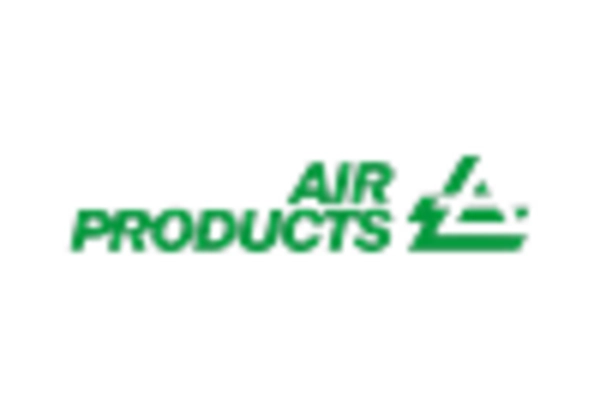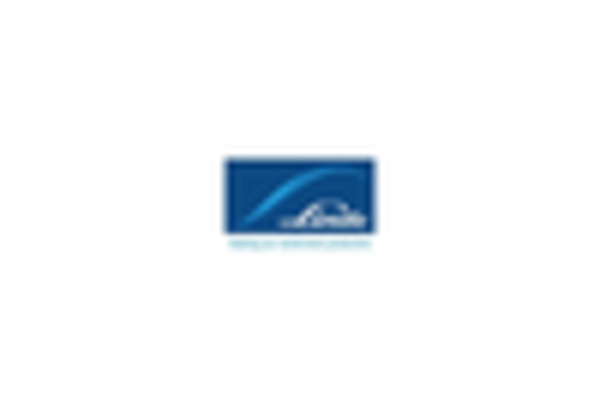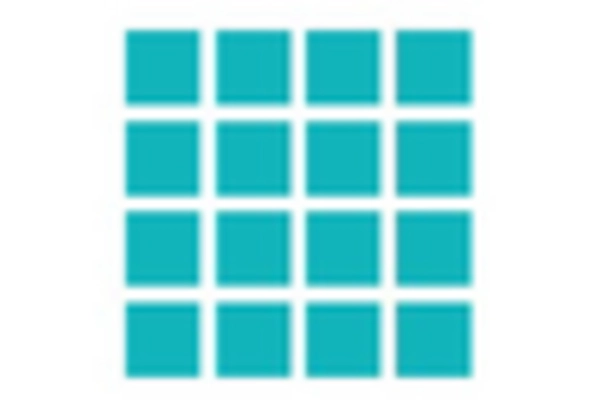Growth in End-User Industries
The expansion of end-user industries, including automotive, electronics, and food processing, significantly influences the Inorganic Chemical Packaging Market. As these sectors evolve, they increasingly require specialized packaging to handle various inorganic chemicals safely. For example, the automotive industry utilizes inorganic chemicals for manufacturing batteries and coatings, which has seen a steady growth rate of around 3.8% annually. This growth translates into a heightened demand for packaging solutions that can accommodate the specific needs of these chemicals, thus driving the packaging market's development.
Stringent Regulatory Standards
The imposition of stringent regulatory standards regarding the handling and transportation of inorganic chemicals is a crucial driver for the Inorganic Chemical Packaging Market. Regulatory bodies worldwide enforce guidelines to ensure safety and environmental protection, compelling manufacturers to invest in compliant packaging solutions. For example, regulations concerning hazardous materials necessitate the use of specialized containers that can prevent leaks and spills. This compliance requirement is projected to increase the demand for high-quality packaging solutions, thereby fostering growth in the packaging market.
Rising Demand for Inorganic Chemicals
The increasing demand for inorganic chemicals across various industries, such as agriculture, pharmaceuticals, and construction, is a primary driver for the Inorganic Chemical Packaging Market. As industries expand, the need for effective packaging solutions to ensure the safe transport and storage of these chemicals becomes paramount. For instance, the agricultural sector's reliance on fertilizers and pesticides has surged, leading to a projected growth rate of approximately 4.5% in the inorganic chemical sector. This trend necessitates innovative packaging solutions that can withstand the corrosive nature of these substances, thereby propelling the packaging market forward.
Technological Innovations in Packaging
Technological advancements in packaging materials and methods are reshaping the Inorganic Chemical Packaging Market. Innovations such as the development of advanced barrier materials and smart packaging solutions enhance the safety and efficiency of chemical storage and transport. For instance, the introduction of biodegradable packaging options is gaining traction, aligning with sustainability goals while addressing the unique requirements of inorganic chemicals. This trend is expected to contribute to a market growth rate of approximately 5% over the next few years, as companies seek to adopt more efficient and environmentally friendly packaging solutions.
Focus on Sustainability and Eco-Friendly Solutions
The growing emphasis on sustainability and eco-friendly practices is significantly impacting the Inorganic Chemical Packaging Market. Companies are increasingly seeking packaging solutions that minimize environmental impact, such as recyclable and biodegradable materials. This shift is driven by consumer preferences and regulatory pressures, leading to a projected increase in the market for sustainable packaging solutions by approximately 6% in the coming years. As businesses strive to align with sustainability goals, the demand for innovative packaging that meets these criteria is likely to rise, further propelling the growth of the packaging market.


















Leave a Comment